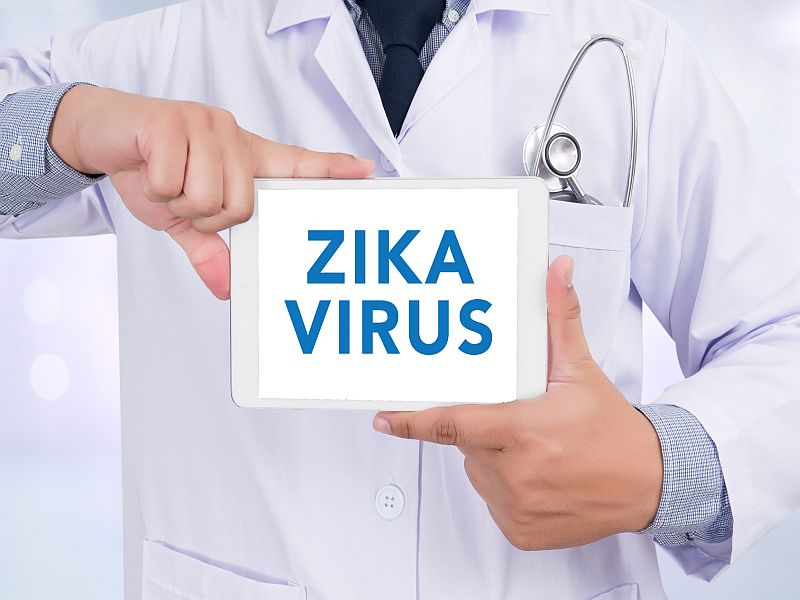
When news reports first began to emerge of mysterious, severe birth defects in Brazilian newborns, few could have imagined these isolated tragedies would explode into the leading health news story of 2016: the Zika virus.
Soon, those few Brazilian cases of microcephaly — babies born with abnormally small heads and underdeveloped brains — grew to become thousands. Doctors quickly made the link between maternal infection with mosquito-borne Zika in pregnancy, and infant microcephaly and other neurological issues.
In the United States, officials at the federal Centers for Disease Control and Prevention (CDC) went on high alert as the summer mosquito season advanced. Cases of infection in the Miami area and the Texas-Mexico border led to travel alerts for pregnant women, along with advice for warding off mosquito bites.
By autumn, the Zika panic had begun to subside — the CDC lifted its Miami advisory although another for Brownsville, Texas, remains. In November, the World Health Organization declared Zika to be a chronic threat — much like other mosquito-borne scourges — but no longer a global health emergency. Progress toward effective vaccines seems promising, scientists reported.
However, the threat remains real, and just last Thursday the CDC said it had earmarked another $184 million to help prevent and fight Zika.
—–
When music icon Prince died in June from an overdose of the potent opioid painkiller fentanyl, his passing marked another low point in the ongoing U.S. epidemic of opioid abuse.
According to the CDC, more than 2 million Americans are now addicted to these drugs, which also include Oxycontin, Vicodin and heroin. More than 14,000 people die each year in the United States from prescription opioid overdoses, the agency said.
Even the smallest children aren’t safe: CDC statistics show a fourfold rise between 1999 and 2013 of babies born with opioid withdrawal symptoms.
Struggling to curb the epidemic, the U.S. Food and Drug Administration (FDA) in May approved an implant aimed at helping addicts quit. And the U.S. Drug Enforcement Administration in October mandated significant cuts in the production of opioid painkillers.
—–
It was a difficult year for Obamacare, despite the fact that about 19 million Americans now have much-needed health insurance coverage under the controversial program. In late October, news arrived that premiums would rise by an average of 25 percent — even as choices of plans for consumers shrank.
With the presidential victory of Donald Trump in November, the Affordable Care Act’s long-term future seems uncertain. However, a HealthDay/Harris Poll conducted just after the election found that support for repeal of the law is waning — 43 percent of respondents now want to see the program amended but not repealed, up from 30 percent before the election.
—–
The past year saw the popularity of e-cigarettes continue to grow, especially among the young. A CDC report issued in July found that 3 percent of Americans now “vape” regularly, with use highest among those aged 18 to 24.
But, far from being a “healthier” alternative to traditional cigarettes, teens who regularly vape are more likely to move on to frequent and heavy tobacco smoking, according to a study released in November.
—–
Sticker shock over prescription drug pricing also rocked the American public in 2016.
Some examples: newly approved hepatitis C drugs were priced at $1,000 per pill; the manufacturers of the allergy-rescue device EpiPen boosted its price sixfold; and Turing Pharmaceuticals sparked outrage when it raised the price of a generic anti-infection drug, Daraprim, from $13.50 to more than $750 per pill.
Many Americans saw these actions as little more than price-gouging. A HealthDay/Harris Poll conducted in October found that 81 percent of respondents said they now favored price controls or caps on medical drugs and devices.
—–
One longtime dinner-table staple, the salt shaker, also had a decidedly shaky year in 2016. A Canadian study released in May upset traditional wisdom, suggesting that a low-salt diet might come with its own health risks.
But the FDA soon repeated its warning that most Americans eat far too much sodium than is good for them. And in October, a 25-year study supported that notion, linking reductions in daily salt intake to longer life span.
Other health news making headlines in 2016:
- In May, the FDA released its long-awaited revision to the “Nutrition Facts” label on packaged foods. The redesign shifted the focus to more “realistic” portion sizes, as well as an emphasis on added sugars.
- The burgeoning popularity — and dangers — of testosterone supplements were in the spotlight again. One study released in February found that the hormone does little for men’s health, outside of boosting some men’s flagging sex drive. And in October, the FDA warned that abuse of the supplements can help cause heart attacks, personality changes and infertility.
- Americans also learned more in 2016 about the long-term brain damage from concussions — often linked to contact sports such as football. One report in July found a doubling of reported concussions in U.S. kids, although better diagnosis may be behind the trend. And in December, the U.S. Supreme Court upheld a $1 billion settlement in a concussion-related lawsuit that could benefit 20,000 retired National Football League players. The settlement is intended for the long-term care of players with dementias and other issues linked to head injuries suffered during their careers.
Source: HealthDay

Leave a Reply